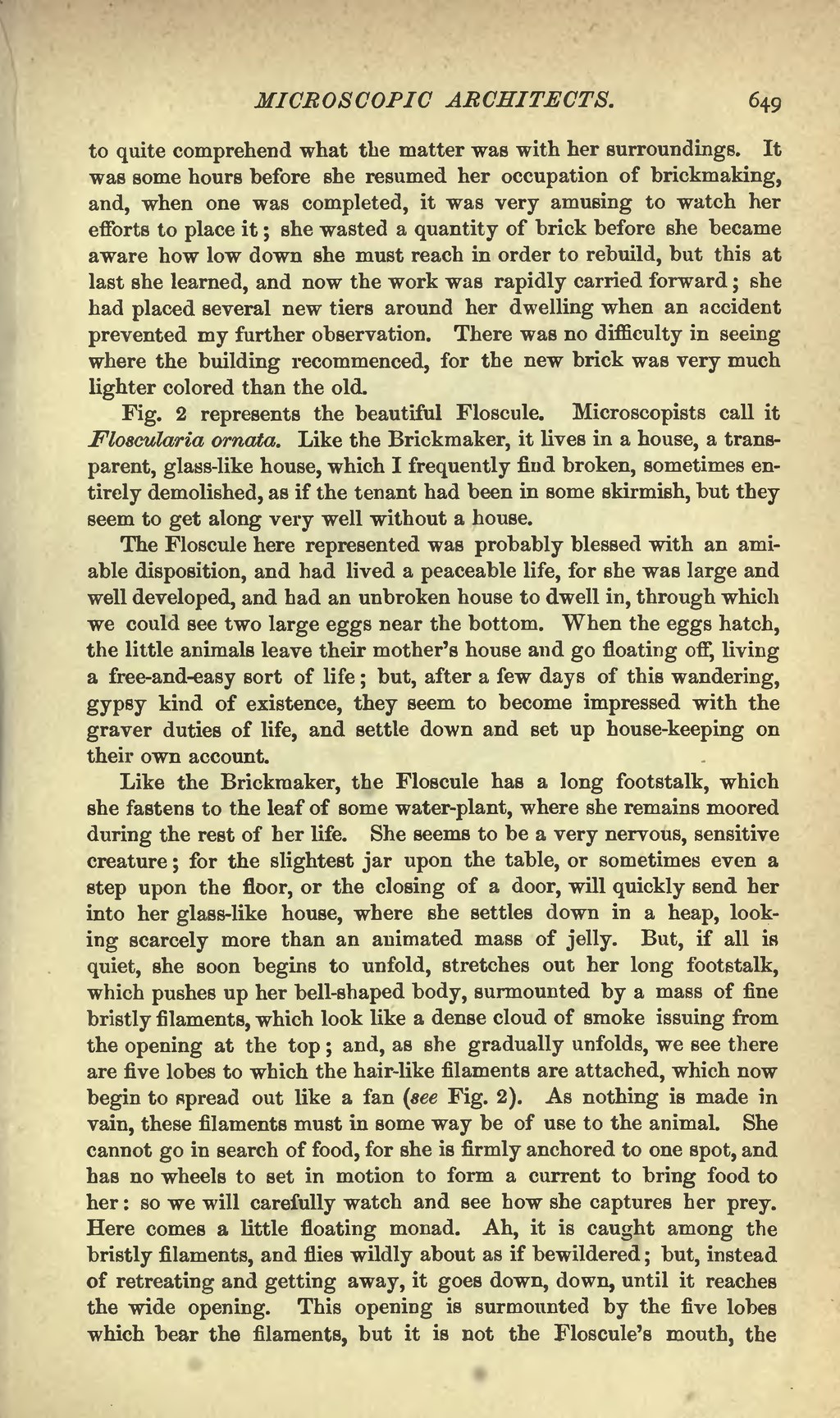to quite comprehend what the matter was with her surroundings. It was some hours before she resumed her occupation of brickmaking, and, when one was completed, it was very amusing to watch her efforts to place it; she wasted a quantity of brick before she became aware how low down she must reach in order to rebuild, but this at last she learned, and now the work was rapidly carried forward; she had placed several new tiers around her dwelling when an accident prevented my further observation. There was no difficulty in seeing where the building recommenced, for the new brick was very much lighter colored than the old.
Fig. 2 represents the beautiful Floscule. Microscopists call it Floscularia ornata. Like the Brickmaker, it lives in a house, a transparent, glass-like house, which I frequently find broken, sometimes entirely demolished, as if the tenant had been in some skirmish, but they seem to get along very well without a house.
The Floscule here represented was probably blessed with an amiable disposition, and had lived a peaceable life, for she was large and well developed, and had an unbroken house to dwell in, through which we could see two large eggs near the bottom. When the eggs hatch, the little animals leave their mother's house and go floating off, living a free-and-easy sort of life; but, after a few days of this wandering, gypsy kind of existence, they seem to become impressed with the graver duties of life, and settle down and set up house-keeping on their own account.
Like the Brickmaker, the Floscule has a long footstalk, which she fastens to the leaf of some water-plant, where she remains moored during the rest of her life. She seems to be a very nervous, sensitive creature; for the slightest jar upon the table, or sometimes even a step upon the floor, or the closing of a door, will quickly send her into her glass-like house, where she settles down in a heap, looking scarcely more than an animated mass of jelly. But, if all is quiet, she soon begins to unfold, stretches out her long footstalk, which pushes up her bell-shaped body, surmounted by a mass of fine bristly filaments, which look like a dense cloud of smoke issuing from the opening at the top; and, as she gradually unfolds, we see there are five lobes to which the hair-like filaments are attached, which now begin to spread out like a fan (see Fig. 2). As nothing is made in vain, these filaments must in some way be of use to the animal. She cannot go in search of food, for she is firmly anchored to one spot, and has no wheels to set in motion to form a current to bring food to her: so we will carefully watch and see how she captures her prey. Here comes a little floating monad. Ah, it is caught among the bristly filaments, and flies wildly about as if bewildered; but, instead of retreating and getting away, it goes down, down, until it reaches the wide opening. This opening is surmounted by the five lobes which bear the filaments, but it is not the Floscule's mouth, the
